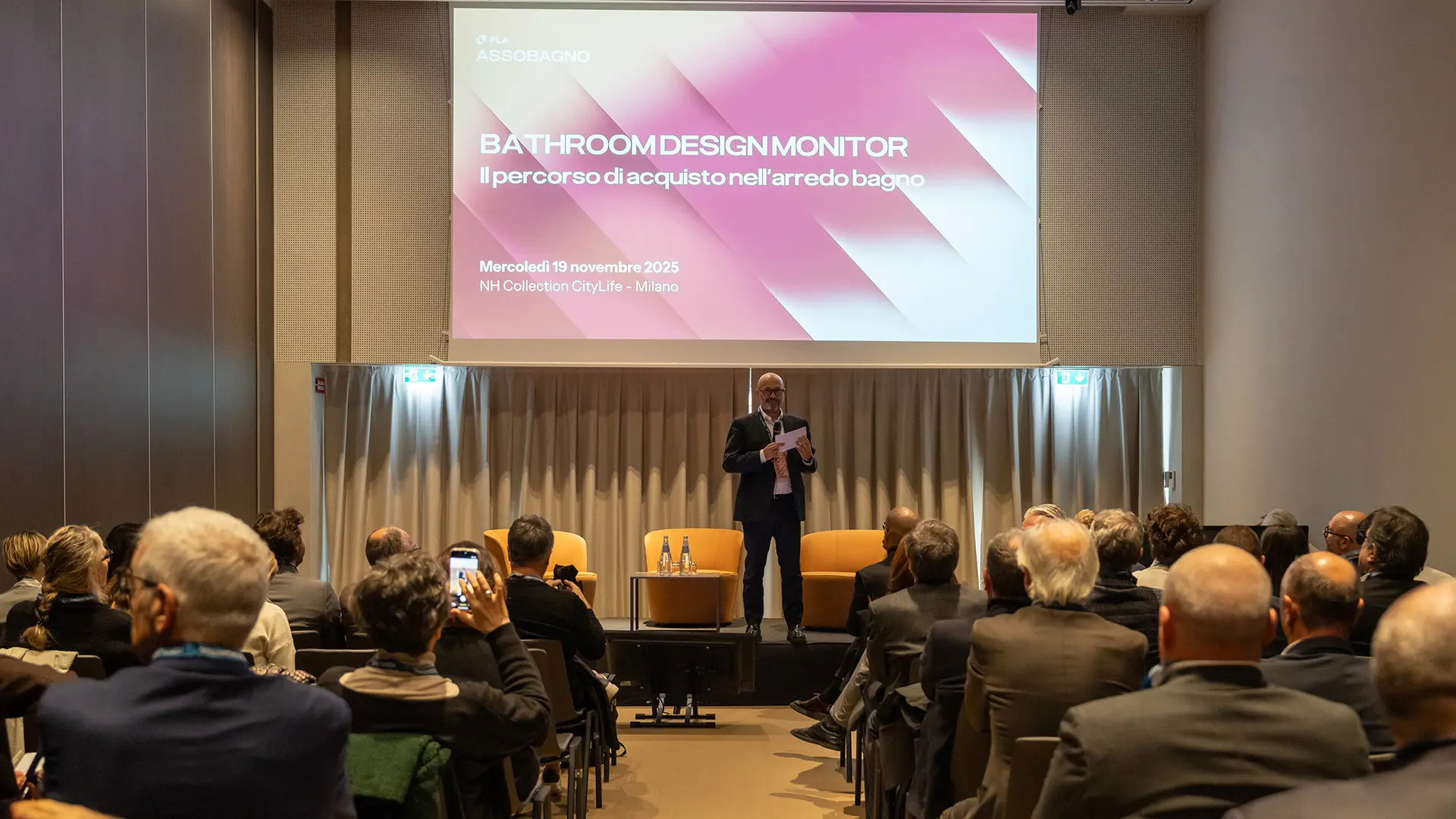They are all Italian and all in some way draw on the theme of memory. This is true even when they deal with current sporting events associated with the imminent inauguration of the Winter Olympics. There are ten of them and for the most part they are held in the most reserved cultural circuits, outside the mainstream. It’s even better when they’re out of town, bringing historic residences to life with gleams and flashes of good design
The boom of contract furniture in India: new opportunities and great returns

Lema
With branded residences, luxury hotels and commercial spaces, India offers strategic opportunities for Italian furniture companies, spanning hospitality, upmarket residential units and next-generation offices
Expectations are high, worthy of the world's most populous nation, on course to overtake Germany by 2028 to become the world’s third-largest economy in terms of market exchange rates.
The effects of this race appear across numerous fields and sectors, from technology to the service industry, including the many opportunities in the residential and contract markets. Significantly, numerous brands are already active in India, including Minotti, Poliform, Porro, Visonnaire, Turri, Edra, Gervasoni and Lema. The driving force is robust economic growth, an unprecedented expansion of the affluent class and a new culture of urban living and luxury that is fostering interesting opportunities both in large metropolises and new poles.
Luxury Residences
Knight Frank's latest Wealth Report 2025 provides a general picture of the situation. It predicts India will have a 9.4% increase in the number of high-net-worth individuals (HNWIs), those with assets of more than 10 million US dollars. The population of HNWIs, estimated at 85,698 people in 2024, is expected to rise to 93,753 by 2028, reflecting the Asian giant’s expanding wealth landscape.
This increase, Knight Frank points out, highlights the country's strong long-term economic growth, expanding investment opportunities and the evolution of the luxury market, positioning India as a key player in global wealth creation. In 2024, the number of Indian HNWIs increased by 6% year-on-year, and today, the country is home to 3.7% of the world's population of wealthy individuals, ranking fourth after the United States, China, and Japan. The combined wealth of Indian billionaires is estimated at $950 billion, placing the country in third place globally, behind the United States ($5.7 trillion) and China ($1.34 trillion). In the recesses of these numbers, explains Gulam Zia, senior executive director at property consultant Knight Frank India, there is a specific context that can help to understand why today it is not only this coveted wealth that is driving a flourishing phase for hotels, branded residency and high-end real estate: “In India, about fifteen years ago, we had a wave of super luxury apartments, which lasted a few years before the trend collapsed. The oversupply of ultra-high-end properties brought down the market. For almost a decade – I would say ten or twelve years – there was no interest at all in the luxury segment.” This context has to be borne in mind when it comes to Branded Residencies, a phenomenon that has reappeared in the country with recent launches, such as the Four Seasons Private Residences in Bangalore or the Westin Residences in Gurugram, on the outskirts of the capital Delhi. According to the Knight Frank India report, India ranked sixth globally for active projects, contributing 4% to the global supply of branded residencies, especially in Mumbai, Delhi, Bangalore and Pune.
Branded residencies
“If we go back 15-18 years, when super luxury apartments and condominiums came on the market, there must have been a strong motivation to push buyers to acquire these homes, and pay very high figures. To make these offers more attractive, to make them seem more desirable, brands were introduced,” Zia reconstructs. “At that time, Indian builders had no real reason or selling point to convince the same clients they had been dealing with for years to spend two, four or ten times as much for the sake of luxury. So, to support the narrative, they introduced the concept of “branded residences”, linked to brands from the world of luxury, fashion, or associated with a prestige concept.” But, at the time, they didn't have much to offer besides the brand, the expert points out, and this led to the failure of the experiment.
“At the same time, another type of branded residence appeared: those linked to hospitality – such as the Carlton Residences, the Four Seasons Residences, and so on. A branded residency linked, for example, to a high fashion brand, offered an aesthetically appealing product, but everything ended there. The ‘designer apartments’ model was quickly abandoned, because buyers do not want mass-produced furnishings, even if they are by leading designers,” Zia continues. The model of branded hotel residencies, Zia continues, was successful because it offered a service. “When it comes to extreme luxury, in India the service is more important than the product. Those who buy these properties are not interested in aesthetics alone, but in lasting comfort. Today there continue to be two categories of ‘branded residences’: that of fashion brands – in crisis – and that of hospitality brands, which is growing.” With a further development, that of manufacturers such as DLF, Lodha, Prestige and Oberoi that today have become strong and authoritative brands themselves. “They are the ones who choose to partner with hospitality brands to ensure that buyers can enjoy a pampered life in the long run.”
The boom in the hotel industry
Then there is another relevant point. Domestic travelers now account for almost half of the clientele of luxury hotels, a share that has grown substantially compared to pre-Covid levels. For decades, India’s luxury hotel market has been dominated by old converted mansions and a handful of premium urban structures. The Taj, Oberoi Hotels & Resorts, ITC Hotels and The Leela Palaces, Hotels and Resorts groups have built an iconic portfolio on this basis, capable of attracting both foreign tourists and the Indian elite. The Taj group, for example, has experienced extraordinary growth, from 33 hotels in 2017 to the current 137. Soon international brands such as Marriott, Accor, Hilton and Hyatt followed. In June, India had 35,000 luxury hotel rooms belonging to well-known brands, spread across more than 200 properties. According to the consulting firm HVS ANAROCK, by 2030 the country is expected to add over 20,000 new rooms. Marriott International, for example, plans to open 33 new luxury hotels under the JW Marriott, Ritz-Carlton, St. Regis, W and Luxury Collection brands, more than doubling its presence. Indian groups are equally ambitious, with hundreds of new projects planned by 2030. The hierarchy of cities affected by this residential and hotel boom, according to Zia, is quite clear. Mumbai is in first place, followed by Delhi and Bangalore. Then come Hyderabad, Pune, Chennai, which are catching up. But there is one place on the rise, outside this group: Goa. “Goa is a global tourist destination, with its unique beauty and aesthetic. We will witness the next wave of luxury there and soon it could become a kind of Monaco of India.”
Offices and data centers
Then there is the question of workspaces. A significant example of this is the record-breaking investment of $15 billion over five years announced by Google for the construction of a data center dedicated to artificial intelligence in the state of Andhra Pradesh. At the same time, Global Capability Centers (GCCs) are redefining the office landscape in India. It is estimated that by this year they will occupy between 40 and 45 percent of the total office space in the country, with 2 million professionals employed by 2026. Despite the customs duties and tariffs, numerous American multinationals are still setting up campuses offshore and the concentration is particularly high in Silicon Valley India, Bangalore. Here, while walking a kilometer, you can meet Google, Qualcomm, Nvidia, Visa, Samsung and Amazon. Across the country, the New York Times recently wrote, foreign-owned offices are now the main driver of the commercial real estate market. It is estimated that 50 new centers have been opened in the last year alone, and that another 100 will be inaugurated during 2025. The next focus, according to the specialized press, will concern smaller cities, defined as Tier 2 or Tier 3 — centers such as Chandigarh, Jaipur, Ahmedabad, Indore, Bhubaneswar, Vizag, Coimbatore and Kochi, which already host a pool of tech talent estimated between 490,000 and 540,000 professionals. Talents to be pampered with decors and offices worthy of their genius.


 Markets
Markets








